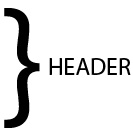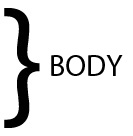How to write an Acknowledgement Letter
How to Write an Acknowledgement Letter?
Acknowledgement letters are important as they allow others to know that you value their time and opinion. They effectively communicate your input to necessitate further action. They ascertain accomplishments and achievements. They confirm and clarify and build goodwill and trust. Writing Acknowledgement Letter is important as mentioned above. And to know what to write and how to write makes the importance of these letters two fold.
Acknowledgement Letter Basic Guidelines
- Outline – Before you sit down to write consider what all you need to write. If you want to acknowledge for a product then keep the required documents near you. Check dates of product order/request and product delivery. Create a list of points regarding your satisfaction, dissatisfaction or any other information. Plan the placement of information in a serial wise manner. Consider yourself as the recipient and see if you have enough and relevant information. This way you are able to organise the information appropriately.
- Drafting – Drafting an acknowledgement letter is the second step towards writing an effective one. Drafting is a rough letter before you actually start the final one. Use the information of the outline and divide into short paragraphs. Since it is a draft write whatever comes in your mind irrespective of grammar, paragraph structure, punctuation, spelling etc. sentence and. Then read it aloud to yourself. How does it sound? First attempts are hardly the right one’s here. Go through the contents again and refer them with the outline and your objective. The major objective of drafting is to have a concise matter for the final letter and to make sure that your thoughts and ideas are conveyed in a cohesive manner. The opening and conclusion are of the utmost importance. The opening should lead to the body (subject) of the letter. It should maintain a continuum and not break the transition. The conclusion sums up all in brief with a positive impression.
- Be Sincere – Be sincere whilst writing or create such a feel inside to provide genuineness to the letter. Think of what the reader will think when he reads it. It shouldn’t come across to him that you are just faking or doing a formality. Experienced people have the knack figuring out dishonest statement.
- Address it to a Person – Always make sure that you address your letter to a specific person and not just the company or organization in general. Try to find out the person who is to be acknowledged as he is the ones who deserves the credit. Addressing it to just an organisation has a less impact. After all business relationships or others are built on human emotion and personal interaction. If you are unable to know the required addressee, write the name of assistant, a second contact person. This is important to establish or maintain a line of communication indicating a healthy business relationship. You can also request for the appropriate person’s name for future correspondence or reference.
- Short and Specific – Letters of acknowledgement are meant to be short and specific, so avoid irrelevant details. Be specific to the subject in mention. Do not repeat any information which the reader already knows. Few simple words of acknowledgement are better than a complicated, heavily phrased lengthy letter. Consider yourself as the reader and would you like to read in length about the acknowledgement especially if it’s official.
- Using Letterhead – As a rule an Official Acknowledgment letter should have a company letter head on the Top Margin of the page, left, right or middle. If writing on a personal level an official letterhead is not required. One can however, use a personal letter depending upon his desire or need.
- Be Polite - As always, acknowledgement letters have no place for harshness. It is a basic courtesy amongst almost all types of letters. Start on a positive note and maintain a polite tone throughout your letter. If you are not satisfied or have grievances then also start with the positive points. Use your critique or sarcasm in the latter part of the letter. Build a positive tempo and use the same to resolve your negative issues. You have to be courteous here because the reader may be dissatisfied or may become defensive. Politeness becomes even more important when you are at the receiving end owing to any damage, inconvenience, miscommunication or problem caused by you. Apologise, assure and ensure a swift action.
- Timely Acknowledgement – ‘A stitch in time saves the nine’ is one phrase which is quite apt when it comes to letters of acknowledgement. It is highly advisable to send the acknowledgment letter within few days of receiving the source for acknowledgement. A delayed letter shows a fake gesture and it may be remembered for untimely delivery. But another phrase – ‘Better late Than Never’ also comes into play here. If the delay was inevitable apologize for it in the most sincere manner. Sometimes it is the acknowledgment that matters even if it is untimely but don’t consider it as an acceptable rule because you may not know what the other person thinks of your gesture.
- Proofreading - Check your grammar, spellings, sentence formation and structure. Use active voice instead of a passive voice as the former has a commanding appeal, required especially if you have to flaunt your company’s repute, yours or otherwise. Check the accuracy, clarity and a sense of completeness of your paragraphs. Keep your tone consistent, avoids abstract terms which are generally not understood by all like slang, clichés or phrases. Remove any confusing items. If typed on PC use professional fonts like Times New Roman or Arial and maintain the same. Also keep in mind the legibility of words; neither too small nor too big. Appropriate dates, signature and complimentary closure should not be forgotten.
Format of Acknowledgement Letter Writing
Similar to other letter formats, a standard letter of acknowledgment has similar one, with slight changes. This is a standard format; one can use one’s own choice of layout depending on one’s need.
|
Recipient's Name
Dear Contact Person First Paragraph - Gesture of acknowledgment with other details of service, product, relevant issue etc. Second Paragraph - Relevant specific points, clarifying your objective, confirming receipt of the product or service, thanking the addressee for delivering the requested items or information, listing of each item received along with the date. How was your experience? Intimation for any further communication and so on.
Signature First Name Last Name |
 Your Name
Your Name Reference or Subject
Reference or Subject Subscription - Thanking you, yours sincerely etc.
Subscription - Thanking you, yours sincerely etc. 